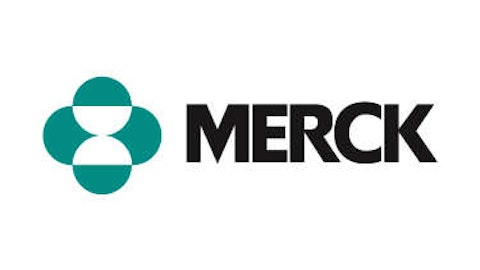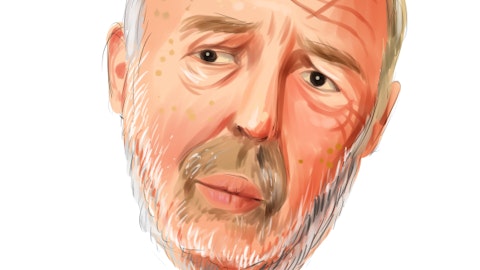The Coca-Cola Company (NYSE:KO) has been responsible for producing some of the best returns for shareholders in the market over the past 100 years, but will the company continue to do so? Could it be time to consider investing in another beverage company?
Well, Coke’s closest competitor is obviously PepsiCo, Inc. (NYSE:PEP), followed by Dr Pepper Snapple Group Inc. (NYSE:DPS). Both Dr Pepper and Pepsi have always been thought of as under-performers when compared to Coke. However, with Coke reporting slower sales in the last quarter of 2012, is it time to consider selling Coke and buying in to one these competitors?
Overview
The Coca-Cola Company (NYSE:KO)
- 3500 products world wide
- 15 brands worth more than $1 billion
- 200+ countries
- 270 bottling plants
- $48 billion revenue 2012
- Coca-Cola is the third biggest brand by value in the world – measured by net margins, average revenue per customer, advertising spend, brand affection and loyalty.
PepsiCo, Inc. (NYSE:PEP)
- 200+ countries
- 22 brands with revenue of more than $1B
- 360 products spread across five main brands
- $65 billion revenue in 2012
- Ranked 38 in the top 500 Global brands for 2012
Dr Pepper Snapple Group Inc. (NYSE:DPS)
- Operations limited to north America and the Caribbean
- More than 50 brands on offer
- $6 billion revenue in 2012
So, a quick overview highlights the size and strengths of each company. Coke is the biggest by exposure, although, as I will show below, Pepsi’s larger range of products produces a higher revenue than Coke’s. Dr Pepper is by far the smallest company; in fact, Dr Pepper’s revenues are only 10% of Pepsi’s.
Revenue
| PepsiCo | Coca-Cola | Dr Pepper Snapple | ||||
| $US Millions | 2011 | 2012 | 2011 | 2012 | 2011 | 2012 |
| Revenue | 66,504 | 65,500 | 46,766 | 48,000 | 5,903 | 6,000 |
| Growth | 15.00% | -1.51% | 33.10% | 2.64% | 4.70% | 1.64% |
| Gross profit | 37,505 | 34,080 | 28,600 | 28,964 | 3,535 | 3,370 |
| Margin | 56.40% | 52.03% | 65.30% | 60.34% | 59.90% | 56.17% |
Pepsi has the largest revenue. That said, Coke has the best gross profit margin of 60% in 2012 compared to Pepsi’s 52%.
Dr Pepper has the smallest revenue in the group, but the company does have the second strongest gross margins. Gross margins were 56% in 2012, down from 59% in 2011 – still higher than Pepsi’s.
If revenue growth is taken into account, Dr Pepper has achieved the most steady revenue growth. Pepsi and Coke had high double-digit growth rates in 2011, but growth fell to more believable numbers in 2012.
So far, Coke is the biggest company, while Pepsi has the largest revenue, and despite its size Dr Pepper is highly efficient.
The Bottom Line
| Pepsi Co | Coca-Cola | Dr Pepper Snapple | ||||
| $US Millions | 2011 | 2012 | 2011 | 2012 | 2011 | 2012 |
| Pre-tax profit | 8,834 | 8,300 | 10,627 | 11,810 | 925 | 978 |
| Margin | 13.30% | 12.67% | 22.70% | 24.60% | 15.70% | 16.30% |
| Net profit | 6,462 | 6,180 | 8,634 | 9,000 | 606 | 629 |
| Margin | 9.70% | 9.44% | 18.50% | 18.75% | 10.30% | 10.48% |
A company’s bottom line is very important, as it can be an indicator of how much cash the company will be able to return to shareholders. Despite Pepsi’s larger revenues, the company is not able to transform this into profits. The company has the smallest net profit margin in the group; Pepsi only receives 9.4 cents for every $1 in revenue.
In comparison, Coke has a net margin of nearly 19%; more than double that of Pepsi. Dr Pepper is the middle again; the company produces a net margin of just over 10%.

Presented in graph form, the difference in margins is staggering. Coke is obviously the most efficient company, and is almost twice as efficient as Pepsi.
So, how effective are these companies at translating profit into shareholder returns?
Return on Shareholder Equity

I believe the return on shareholder equity is one of the best ways to measure a company’s efficiency and improve value for shareholders. The chart above shows shareholder equity across each of the three companies for the past five years. Based on the five year historic figures, I have added a exponential moving average to highlight the changes in equity and predict a rise in equity for a further two years.
| Company | 5-yr ROE |
| KO | 62% |
| PEP | 85% |
| DPS | 15% |
So, despite Coke’s higher net margins, Pepsi has actually grown shareholder equity much faster, due to Pepsi’s larger size. In addition, Pepsi’s shareholder equity is forecast to continue growing at its current rate. Dr Pepper Snapple comes in dead last, which is surprising considering the company’s efficiency and revenue growth.
In the battle for investment, Pepsi was lagging Coke after the company’s poor performance in for margins. However, an investment in Pepsi is beginning to look appealing, as the company has achieved the best return on shareholder equity over the past five years.
On the other hand, Dr Pepper Snapple put in an average performance up to this point, and now the company has fallen into a definitive last place.
That said, all three companies offer dividends and stock buybacks; but which one has returned the most cash to shareholders?
Shareholder cash return
| 5-yr average | |||
| $US Millions | KO | PEP | DPS |
| Dividends Paid | 20,290 | 14,720 | 729 |
| Stock Buyback | 8,659 | 11,760 | 1,990 |
| Total Cash Returned To Shareholders | 28,949 | 26,480 | 2,719 |
| 5-yr total Net Profit | 48,187 | 35,759 | 2,503 |
| % of Net Profit returned to shareholders | 60% | 74% | 109% |
Dr Pepper is the obvious winner here. The company has returned 109% of its net profit to shareholders over the past five years, beating both Coke and Pepsi, who have only returned 60% and 74% of net profit, respectively.
I believe Dr Pepper’s high cash return to shareholders could be the reason for its lagging ROE rate.
Debt
With Coke, Pepsi and Dr Pepper all roughly tied for investment potential there remains one criterion to evaluate them on: debt.

I am using a net debt to EBITDA ratio to put debt into perspective across all three companies. Debt has grown at Pepsi and Coke, whereas Dr Pepper has managed to reduce debt over this five year period from 1 times EBITDA to 0.8 times–yet despite this, Dr Pepper’s debt is still the highest in the group.
In comparison, Coke and Pepsi rapidly increased their debt in 2010, but since then debt levels have remained relatively stagnant despite revenues growing, indicating that net debt has actually risen.
I am going to have to say Dr Pepper wins this category, as the company has reduced debt, unlike its competitors.
Results
| Category | Winner |
| Revenue | PEP |
| The Bottom Line | KO |
| ROE | KO/DPS |
| Shareholder Cash Return | DPS |
| Debt | DPS |
Overall, Pepsi has the largest revenue and Coke has the best profit margins. Coke and Dr Pepper both win the ROE category, as even though Coke is the clear winner, Dr Pepper has returned most of its profit to shareholders and this will affect the ROE growth. As I say, Dr Pepper has returned the most cash to shareholders, and although it does not have the lowest debt in the group it is working hard to bring its net debt down, while both Coke and Pepsi are not.
So, after taking all of that into account, Dr Pepper Snapple looks to me to be the best investment for shareholder returns, judging by recent historic performance.
Data Source: Saxo Capital Markets, Marketwatch
The article Where To Invest: Coke, Pepsi or Dr Pepper? originally appeared on Fool.com and is written by Rupert Hargreaves.
Copyright © 1995 – 2013 The Motley Fool, LLC. All rights reserved. The Motley Fool has a disclosure policy.





